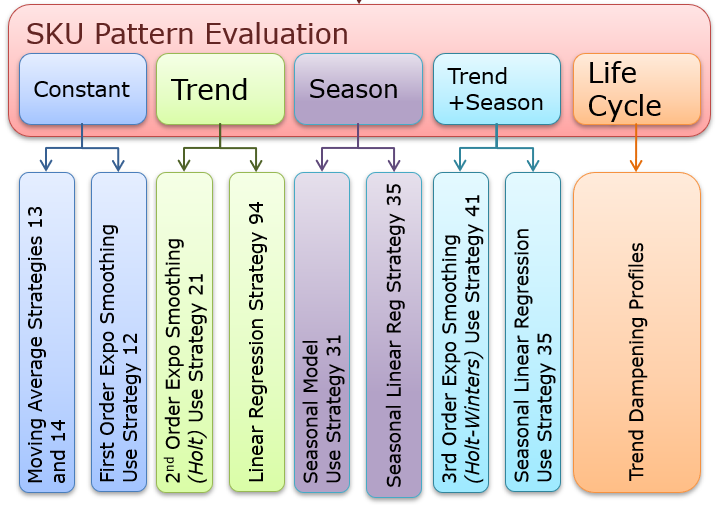SAP IBP Vs SAP APO (SAP SCM)
As the leading authority on Model Tuning and Optimization in SAP SCM (formerly known as APO) we have extensively researched on modeling capabilities in their IBP Demand solution launched
We have done re-implementations of SCM for several companies to leverage the use of statistical models offered by SAP.
Companies that are using SAP SCM have more flexibility now that SAP has introduced the Excel interface through HANA. So what are the pros and cons of IBP vs. APO – this is the subject of an upcoming blog entry.
Statistical Models in SCM
The menu of statistical models available in IBP demand is more limited than what is currently available in SAP SCM(also known as APO DP). Some simple but powerful models are missing.
Although APO is clunky and has an archaic user interface, some of the models are quite stable. Besides the variety of dis-aggregation algorithms available for forecasting from TOP-down to Bottom-up is unmatched by any other demand planning system.
Here we will discuss the model trees available in SCM and IBP. Although simple, the statistical models are provided to match the data patterns in the time series. SCM offers both Univariate and Multi-variate models. The latter is called as the Multiple Linear Regression Models. You can use the MLR profiles to do causal models and event models.
SCM also offers a fancy profile called the composite which can be a combination of univariate and MLR models or a combination of multiple Univariate models.
The basic uni-variate tree consists of the following:
-
Constant – relatively flat or stable demand patterns. You should consider using the simplest models called Moving Average models.
- Typically you would use a 3-month or 4-month MA model.
- You can also a Weighted Moving Average model.
- the other alternative is to use a simple exponential smoothing model with an adaptive alpha. The engine chooses the best alpha.
-
Trend Models
- Linear Regression models with trend but no seasonality. This just fits the equation of a straight line.
- Alternatively you could use the 2nd order exponential smoothing or the Holt model.
-
Trend Seasonal Models
- Linear Regression model with seasonal decomposition – simple but useful model and works in most cases. Also this produces a robust forecast as this uses all of the historical observations unlike smoothing models.
- Holt Winters models – This alternative is advanced but can produce non-robust models. This is largely due to the fact that the SCM engine takes up a lot of the initial observations for initialization.
- Winters models – you can use this when there is no trend. But you should be careful about not over fitting the series. This error can be dangerous.
-
Life Cycle patterns
You can model this with both the phi parameter as well as handcrafted Trend dampening profies. Again SCM gives you the ability to do this with a lot of flexibility.
You can see related Blog entries:
SAP APO Demand Planning: Usability versus Functionality
Is Statistical modelling an after thought?
How to create models for weekly forecasting in SAP APO – A Primer
Find a Linked-in group discussion on a similar topic here so you can understand the different comments on this discussion.


Leave a Reply